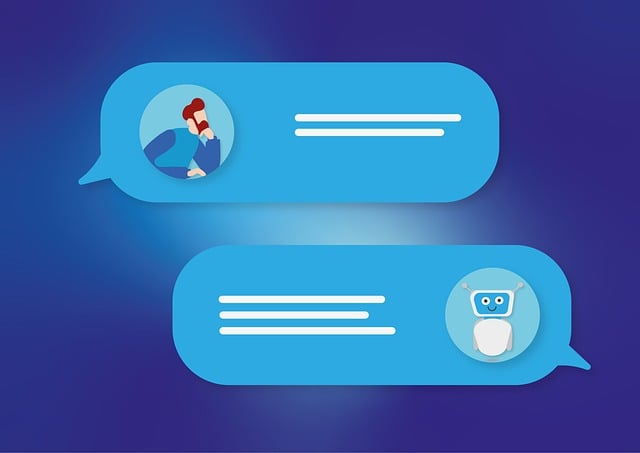AI chatbots for e-commerce have transformed online retail by enhancing customer service through natural language processing (NLP) and machine learning, driving sales, and gathering valuable consumer insights. Effective implementation involves defining chatbot goals (customer service vs. personalized shopping), choosing the right tools (Python libraries, chatbot frameworks with ecommerce integrations) and designing intuitive conversational flows. Rigorous training and testing ensure accuracy before deployment on websites or messaging platforms, ultimately providing intelligent, personalized shopping experiences for customers interacting with AI technology.
Looking to revolutionize your ecommerce platform with AI? Creating a scripted AI chatbot can enhance customer service, boost sales, and drive engagement. This comprehensive guide walks you through every step, from understanding the fundamentals of AI chatbots in ecommerce to defining your chatbot’s purpose and target audience. We’ll explore best scripting languages, design effective conversational flows, and provide training, testing, and deployment tips for a successful launch.
- Understanding AI Chatbot Basics for Ecommerce
- Defining Your Chatbot's Purpose and Target Audience
- Choosing the Right Scripting Language and Tools
- Designing Conversational Flows and Responses
- Training, Testing, and Deploying Your Ecommerce Chatbot
Understanding AI Chatbot Basics for Ecommerce

In the realm of e-commerce, AI chatbots have emerged as a game-changer, transforming the way businesses interact with their customers. These virtual assistants offer a multitude of benefits, from enhancing customer service to driving sales. By understanding the fundamentals of AI chatbot functionality, entrepreneurs can effectively leverage this technology to elevate their online stores.
AI chatbots for e-commerce operate by using natural language processing (NLP) and machine learning algorithms to engage in conversations with visitors, providing instant support and personalized recommendations. They can answer common queries, guide users through product browsing, offer tailored suggestions based on user preferences, and even facilitate the checkout process. This not only improves customer satisfaction but also increases conversion rates. Moreover, these chatbots collect valuable data during interactions, allowing businesses to gain deeper insights into customer behavior and preferences, further refining their services.
Defining Your Chatbot's Purpose and Target Audience

Defining your chatbot’s purpose is a critical first step in creating an effective AI chatbot, especially for e-commerce applications. Before you begin scripting, consider what specific tasks or inquiries your chatbot will handle. Will it be a customer service representative, answering basic product questions and providing recommendations? Or will it focus on personalized shopping experiences, guiding users through their purchase journey based on individual preferences? Understanding your target audience is equally essential. Different demographics have varying needs and communication styles. For instance, a younger audience may prefer casual language and emojis in their chatbot interactions, while professionals might expect more formal and concise responses. Tailoring your chatbot’s personality and tone to resonate with your intended users will enhance user satisfaction and engagement.
Choosing the Right Scripting Language and Tools

When crafting an AI chatbot, selecting the appropriate scripting language and tools is a pivotal step, especially for those developing bots tailored for ecommerce applications. Languages like Python stand out due to their versatility and extensive libraries, such as NLTK and TensorFlow, which offer robust natural language processing capabilities crucial for understanding user queries in dynamic environments like online stores.
For toolsets, consider platforms that provide seamless integration with popular chatbot frameworks (like Dialogflow or Microsoft Bot Framework) and offer features optimized for ecommerce scenarios, including product recommendation engines, inventory management integrations, and contextual awareness. These tools streamline development, ensuring your AI chatbot can seamlessly guide customers through product searches, answer queries about specific items, and facilitate purchases, enhancing the overall ecommerce experience.
Designing Conversational Flows and Responses

Designing the conversational flow is a critical aspect of building an effective AI chatbot, especially for ecommerce platforms where customer interactions are pivotal. The goal is to craft a seamless and engaging dialogue that guides users towards their desired outcomes, whether it’s making a purchase, finding product information, or receiving personalized recommendations. This involves mapping out different user intents, entities, and potential response branches.
To achieve this, developers should consider implementing a structured approach, such as the conversational flow diagramming method. Here, you define user inputs (intents) and system responses, ensuring that each conversation path is well-defined and aligned with common user queries. For instance, for an ecommerce chatbot, intents could include “product search,” “price inquiry,” or “order status check.” Responses should be tailored to provide useful information while maintaining a natural, conversational tone, enhancing the user experience and fostering customer satisfaction in the world of AI chatbots for ecommerce.
Training, Testing, and Deploying Your Ecommerce Chatbot

After meticulously designing and building your AI chatbot for ecommerce, it’s time to put it through its paces. Training is a crucial phase where you feed vast amounts of relevant data into the chatbot’s system. This enables it to learn patterns, understand customer queries, and provide accurate responses. The more diverse and comprehensive the training data, the better equipped the chatbot will be to handle various customer interactions.
Testing follows, and this is where you fine-tune your chatbot’s performance. Conduct thorough tests across different scenarios and user inputs to ensure its reliability and accuracy. Utilize both automated testing tools and manual testing sessions to catch any nuances or potential issues. Once satisfied with the results, deploy your ecommerce chatbot on your website or messaging platforms, ready to engage and assist customers in real-time, enhancing their shopping experience with intelligent and personalized interactions.
Creating an AI chatbot for your ecommerce platform is a strategic move to enhance customer engagement and drive sales. By understanding the fundamentals of AI chatbots, defining their purpose, choosing the right tools, designing intuitive conversations, and rigorous testing, businesses can deploy powerful assistants that provide personalized shopping experiences. Incorporating these steps ensures that your ecommerce chatbot not only improves user satisfaction but also boosts conversions in today’s digital landscape.
